Matador Network's Blog, page 488
April 26, 2022
Watch: Travel Photographer Exposes the Instagram Vs Reality of Popular European Destinations

If you’re a frequent traveler and use Instagram, you’ve probably marveled at some amazing shots and even added a destination or two on your bucket list based on a great photo or exciting reel — 60 percent of Gen Z-ers and 40 percent of millennials use social media for travel purposes, according to a report by the travel company Arrivia. But like other content on Instagram, when it comes to those incredible moments, not everything is as it seems.
Markus Romischer, a 29-year-old travel filmmaker, decided to shed some light on some of the places he’s traveled to in a series called “Insta vs. Reality,” where he’s made over a dozen videos on his TikTok page about what it’s like when he reaches some of those Instagrammable destinations to shoot.
@roemer_productions Expectations vs. reality#instagramvsreality #instavsreality #realitycheck #travellife #expectationvreality ♬ original sound – Roemer Productions
The truth is tourist attractions will always be crowded. And if a “hidden gem” has made it to your For You page, it’s probably not so hidden anymore. We’re not here to bash every spot you’ve set your sights on. In some cases, it might be worth it to travel far to see some of the sights you already had bookmarked. However, you might want to add some roads less traveled to make sure you’re getting a whole experience.
Instead of trying to make your way to the Swiss giant swing or coaster, a great way to see all that Switzerland has to offer is by train. The ride stops at a number of little towns with lovely views of the country’s mountains and waters that are sure to make for a great photo-op. Or try a road trip to Switzerland’s 12 UNESCO-listed sites.
When visiting Italy, there are so many intriguing day trips away from bigger crowds in Rome and Tuscany. The Tuscia region in central Italy has impressive views, stunning historical architecture, and tasty cuisine. The towns are much less crowded and yet offer an incredible Italian experience.
When you finally decide to upload your vacation photos, you can choose whether or not to be stingy with the details. Hopefully, your “Instagram versus Reality” photos won’t require nearly as much Photoshop. 
Guide to Irish for travelers

The Irish language (also known as Gaeilge, Gaelainn, Irish Gaelic or Irish) is one of the oldest languages in the world.
Though it is one of the two official languages of the Republic of Ireland alongside English, language barriers will not be a problem when traveling across the country as people use mostly English in their daily lives (albeit with a variety of Irish accents).
But if you want to learn more about this ancient tongue, this traveler’s guide to the Irish language is the ticket. It’ll provide all the basic information needed to help you connect deeper with the locals in the Irish-speaking regions of the country.
The author:
Úna-Minh Kavanagh was brought up bilingual (Irish and English) in County Kerry, Ireland. Her Grandad was a native Irish speaker from Baile na nGall in the Kerry Gaeltacht. She attended a Gaelscoil, where every subject was taught in Irish and went on to get a Bachelor of Arts in Irish and Journalism from Dublin City University. Úna-Minh was the Culture Night Ambassador for the Irish Language and is on the Audience Committee for TG4, the Irish language public service television network.
Aside from schools, Irish is predominantly spoken in the Irish speaking regions, i.e. Gaeltachtaí. These pockets of Irish language communities are mostly found in the west of Ireland.
Gaeltacht areas include:
Gaoth Dobhair (Gweedore)Conamara (Connemara)Gaeltacht Mhaigh Eo (Mayo Gaeltacht)Oileáin Árann (The Aran Islands)Corca Dhuibhne (The Dingle Peninsula)Uíbh Ráthach (Iveragh Peninsula)Múscraí (Muskerry)Cléire (Cape Clear)An Rinn (Ring)An Sean Phobal (Old Parish)Ráth Cairn (Rathcairn)Baile Ghib (Gibbstown)According to the 2016 Census by the Central Statistics Office, nearly 40 percent of the population of the Republic of Ireland can speak Irish Gaelic. This is a figure that’s largely debated as the data only provides limited information on the extent to which people use Irish. Only 4 percent speak it daily.
A brief history of the Irish languageIrish Gaelic is an example of an ancient language. Its history begins at least as far back as the third or fourth century AD, as evidenced by timeworn Ogham inscriptions.
Ogham inscriptions have been found on standing stones mostly in the southwest of Ireland. The engraved stones, displaying a simple alphabet known as Primitive Irish, were territorial markers or memorials, and there are over 400 known examples of these fragments of the past across the country. You can find Ogham stones in counties Kerry, Cork, and Waterford or see them on display in the National Museum of Ireland in Dublin.
From there, the language developed into Old Irish which appeared in Latin manuscripts as early as the sixth century, and then Middle Irish which was seen in a large amount of literature from the 10th to 12th century.
Early Modern Irish marked the transition period between Middle Irish and Modern Irish, the language the people of Ireland speak today.
Irish in schools in IrelandIrish is taught in schools across the Republic of Ireland. The educational system is made up of primary, secondary, third-level and further education. Irish is a compulsory subject in primary and secondary school.
Most schools use English as their primary language for instruction, however there are schools where Irish is the primary language. Those schools are known as Gaelscoileanna.
Irish language pronunciation guideThere are three main dialects of Irish Gaelic:
Munster Irish (Gaelainn na Mumhan). Munster Irish is spoken in the south and southwest part of the island in counties Cork, Kerry, and Waterford. However, the largest Gaeltacht community in this province is in the far west in County Kerry (known as Corca Dhuibhne).Connacht Irish (Gaeilge Chonnacht). Connacht Irish is spoken in the west part of Ireland, primarily in counties Galway and Mayo. The Conamara Gaeltacht in Galway is also where Ireland’s national Irish language television station has its headquarters.Ulster Irish (Gaeilge Uladh). Ulster Irish is spoken in the northwest part of Ireland, in the Gaeltacht in County Donegal.There used to be a fourth provincial dialect, Leinster Irish, which was spoken in the eastern part of the island, however it died out and no longer exists as a distinct dialect. There are also many sub-dialects of Irish found throughout the county.
Due to the large numbers of sub-dialects of Irish Gaelic, unfortunately nobody could agree on one dialect pronunciation to choose over another, therefore the Irish language has no standardised pronunciation. Most official documents and school books use An Caighdeán Oifigiúil (The Official Standard) for standardised spelling, however.
You can listen to how Irish words and phrases are pronounced through the Irish language synthesiser which features the three main Irish Gaelic dialects. For ease of use, note that Munster Irish is listed as ‘Corca Dhuibhne’, Connacht Irish is, ‘Conamara’, and Ulster Irish is ‘Gaoth Dobhair.’
Please note that there is no Irish word for ‘yes’ or ‘no’, you must use the verb in which the question was asked to answer the question correctly in a positive or negative fashion. For example, in the present tense:
– An dtuigeann tú? (Do you understand?)
– Tuigim (I understand)
– Ní thuigim (I don’t understand)
‘Tuig’ is the root of the verb ‘to understand / to comprehend’. The Irish word order follows a verb-subject-object system.
Irish greetings and common phrasesFor simplicity, the phrases are written in Standard Irish but most native speakers of Irish will use dialectal variations.
Note that the majority of people in Ireland only have a basic grasp of the Irish language and therefore, you would more than likely only be using these phrases in Gaeltachtaí.
IrishEnglishDia dhuit! (singular)Dia dhaoibh (plural)HelloDia is Muire dhuit (singular)
Dia is Muire dhaoibh (plural) Hello (in response to the above)Conas atá tú?How are you?Tá mé go maithI am goodSlán go fóillGoodbyeGo raibh maith agatThank youMaidin mhaithGood MorningOíche mhaithGoodnightMás é do thoil é / Le do thoilPlease… is ainm dom / Is mise …… is my name / My name is …Irish language phrases and words to use when ordering food and drinks
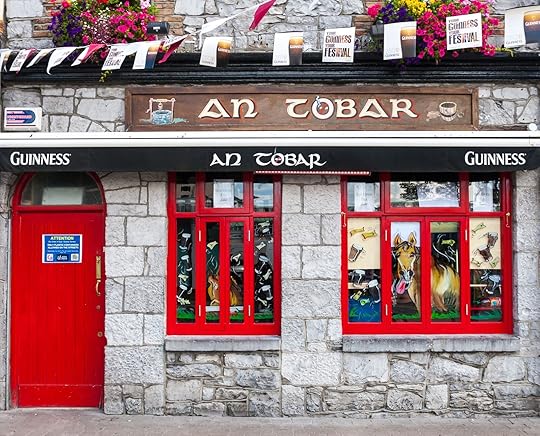
Photo: Ivica Drusany/Shutterstock
Some of the most delicious Irish dishes are Irish stew (stobhach Gaelach), bacon and cabbage (bagún agus cabáiste), and colcannon (cál ceannann).
Common courteous words include ‘le do thoil’ (please), ‘go raibh maith agat’ (thanks), and ‘gabh mo leithscéal’ (excuse me). When visiting a restaurant or a café, the following words will help you get the best service.
IrishEnglishBricfeastaBreakfastLónLunchDinnéarDinnerAn féidir liom ordú a dhéanamh?Can I order?Sláinte!Cheers!An bille, le do thoilThe bill, pleaseIs feoilséantóir méI am vegetarianIs veigeán méI am veganAn biachlár, le do thoilThe menu, pleaseBa mhaith liom níos mó, le do thoilI would like more, pleaseAn ólfá deoch?Will you have a drink?Dhéanfadh beoir an-mhaitheas domI could use a beer!Gloine fíon geal, le do thoilGloine fíon dearg, le do thoilA glass of white wine, please
A glass of red wine, pleaseIrish language phrases to introduce yourself
Looking to introduce yourself? If you want to describe your relationships with others, you will need to learn these essential phrases.
IrishEnglishSeo é m’fhear céileThis is my husbandSeo í mo bhean chéileThis is my wifeSeo mo pháirtíThis is my partnerSeo é mo pháisteSeo iad mo chuid páistíThis is my child
These are my childrenTáim singilI am singleTáim i gcaidreamhI am in a relationshipTáim póstaI am marriedIs baintreach méI am widowedTá páiste / páistí agamI have a child / childrenGrá mo chroí thúI love youIrish language phrases to use when getting around

Photo: Roy Harris/Shutterstock
Moving around in Ireland is easy when you have your own car. For public transport, you can easily book a train, bus or hail a taxi to go anywhere. Most public transport signage and announcements are in both the Irish language and English.
IrishEnglishAerfortAirportStáisiún traenachTrain stationTacsaíTaxiGnólacht carranna ar cíosCar rentalTicéad singilSingle ticketTicéad fillteReturn ticketStop anseo, le do thoilStop here, pleaseCas ar chléTurn leftCas ar dheisTurn rightTéigh díreach ar aghaidhGo straight aheadIrish language phrases and words to use when shopping
Photo: Milosz Maslanka/Shutterstock
Heading out to do some shopping? Try out these Irish language phrases next time you’re in a store. Some of these phrases can be used when you’re eating out or booking transport links too.
IrishEnglishCé mhéad?How much?Cosnaíonn sé … eurosIt costs … eurosAn féidir liom íoc le cárta creidmheasa?Can I pay by credit card?An féidir liom íoc le hairgead?Can I pay by cash?An féidir liom admháil a fháil le do thoil?Can I get a receipt, please?SiopaShopBa mhaith liom éI would like itNí theastaíonn sé uaimI don’t need it More like thisLanguagesThis Guide To Irish Slang and Insults Will Have You Downing Guinness With the Locals in a Flash
More like thisLanguagesThis Guide To Irish Slang and Insults Will Have You Downing Guinness With the Locals in a Flash
Stay Like Royalty at These Airbnb Ireland Castle Rentals

Why stay in a hotel room when you can rent an entire castle for the night? Especially when the setting is the bewitching, rugged hinterland of Ireland. Rumor has it there are over 30,000 castles dotted around the Emerald Isle and a portion of these have been spruced up to receive non-blue-blooded guests. Live like royalty with an “overknighter” at one of these Airbnb Ireland castle estates.
Top-rated Airbnb Ireland castlesIreland Castle Airbnbs near DublinAirbnb Ireland castles for large groupsWe hope you love the Airbnb Ireland Castle rentals we recommend! Just so you know, Matador may collect a small commission from the links on this page if you decide to book a stay. Listed prices are accurate as of the time of publication.
Top-rated Airbnb Ireland castlesRincolisky Castle at Roaring Water Bay
Photo: Airbnb
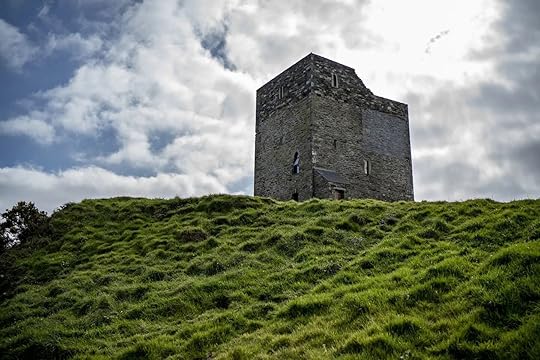
Photo: Airbnb

Photo: Airbnb
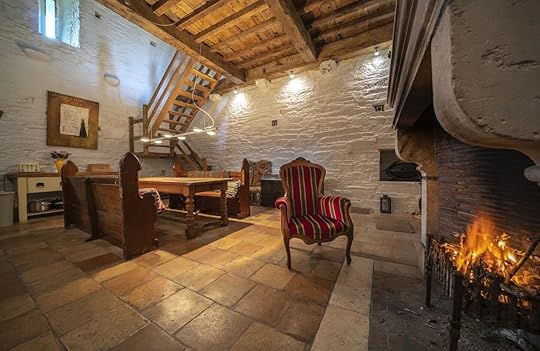
Photo: Airbnb

Photo: Airbnb
Located in a prime spot along the Wild Atlantic Way, the magnificent Rincolisky Castle Airbnb Ireland is perched on a knoll with a view over Roaring Water Bay. The lower floors of the County Cork tower come with all the castle comforts including blazing open fires. What makes the Rincolisky Castle Airbnb all the more unique is the rooftop penthouse and terrace conversion. There’s no finer place to raise your chalice and survey your (temporary) kingdom.
Five guests, three bedrooms
Price: $380 per night

Photo: Airbnb

Photo: Airbnb

Photo: Airbnb
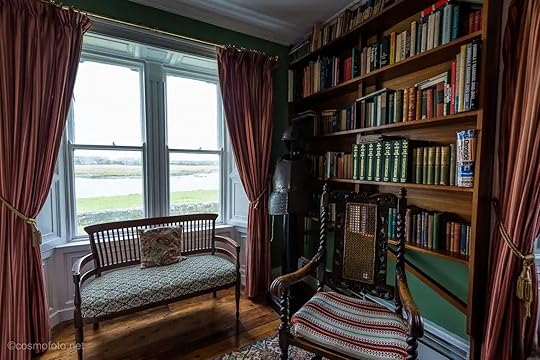
Photo: Airbnb
This Airbnb Galway Ireland castle estate is set on the grounds of a farm where you can expect a warm welcome from free-roaming chickens, dogs, and horses. Hire grants access to the master bedroom plus a twin, although a separate cottage is available for larger groups. The interiors have a homely vibe while a grand piano is added perk for evening sing-alongs. An unbeatable base for exploring the sights of Connemara, the Aran Islands, and the Cliffs of Moher.
Five guests, two bedrooms
Price: 540 per night
Taking a trip to Ireland? Check out Matador’s Ireland accommodation guides: Rent The Holiday Pub in Cork or Tipperary for the ultimate Irish getawayThe best Airbnbs in Belfast, from the Titanic Quarter to Shankill RoadThese Airbnbs make you feel like you’re living in Game of ThronesTubbrid Castle
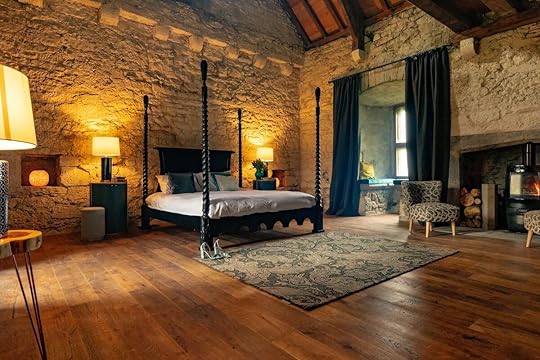
Photo: Airbnb
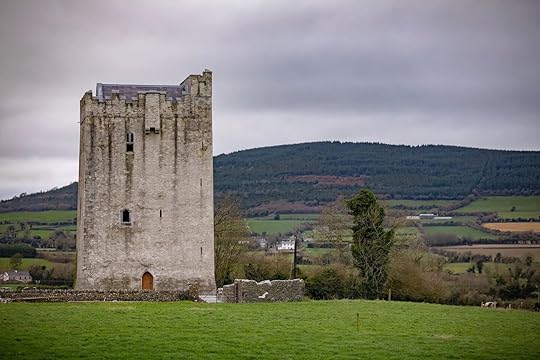
Photo: Airbnb

Photo: Airbnb
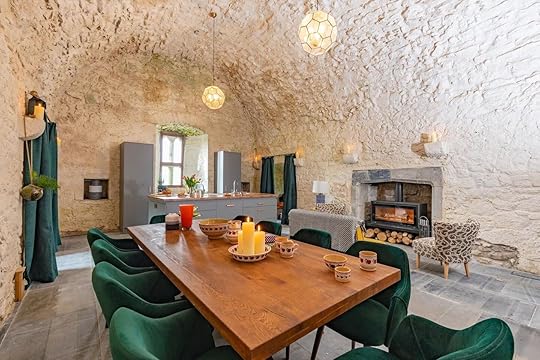
Photo: Airbnb
After spending a lonely century standing uninhabited, this 15th-century tower has been lovingly restored as an Ireland castle Airbnb vacation home. Situated in the heart of the Ancient East, this historic residence is splendid as a starting point for your Irish adventures. Dive into a feast fit for royalty in the Great Hall before peeling off to the three sumptuous guestrooms named for important figures from Ireland’s past. Tubbrid Castle is teeming with window seats and cozy nooks that beg for a daydreaming session in between sightseeing.
Eight guests, three bedrooms
Price: $730 per night
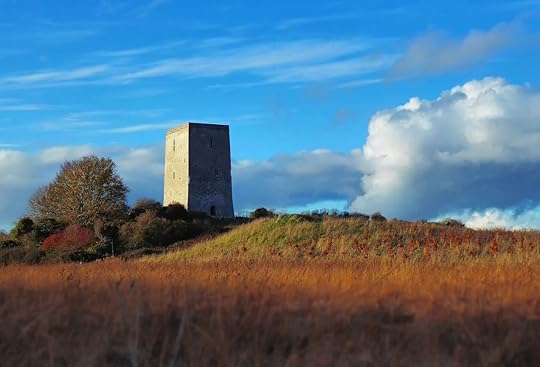
Photo: Airbnb

Photo: Airbnb

Photo: Airbnb

Photo: Airbnb
Switch off and surrender to a retreat free of the modern world at the Black Castle. Heating is strictly limited to the open fireplaces and candles are used in place of electric lights. Don’t even think about asking for the Wi-Fi code. That being said, you can still look forward to a morning elixir courtesy of your Nespresso machine alongside a breakfast spread provided by the host. Adventurous couples will relish this dreamy Ireland Airbnb castle experience that truly does recreate a sense of mediaeval living.
Two guests, one bedroom
Price: $325 per night

Photo: Airbnb

Photo: Airbnb
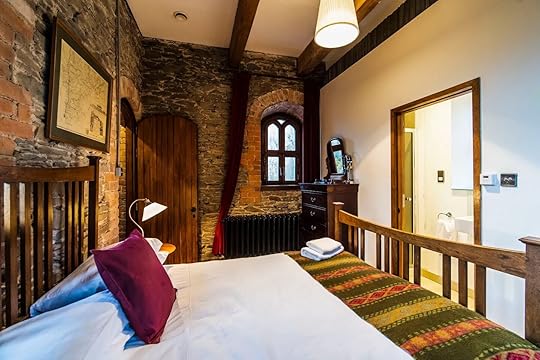
Photo: Airbnb

Photo: Airbnb
Technically a folly, the 19th-century Drummond Tower is buried among a copse outside of Carrickaneane. Linked by an original spiral staircase, this four-story dwelling is perfect for couples and honeymooners seeking a romantic Airbnb Ireland castle escape. Interiors are clad with vintage furnishings including tapestries and chesterfields as well as a robust library of centuries-old books. An external castellated roof terrace provides 360-degree views where you can get your sunset and stargazing fix.
Four guests, one bedroom
Price: $175 per night

Photo: Airbnb

Photo: Airbnb

Photo: Airbnb

Photo: Airbnb
This quirky Airbnb Ireland castle near Dublin is suitable for couples, families, and small groups. Relatively compact, the castle retains a cozy ambiance and captures a rustic essence through its retro furnishings and wood stove. The property garden with a barbecue is a gorgeous spot for an afternoon of sunbathing and swapping stories over a Guinness.
Four guests, two bedrooms
Price: $170 per night

Photo: Airbnb

Photo: Airbnb

Photo: Airbnb

Photo: Airbnb
This noble 19th-century castle dwelling is younger in comparison with the other Ireland castle vacation homes but more than makes up for that in terms of opulence. Guest rooms are stylishly curated with boutique wallpapering, hardwood flooring, and statement chandeliers. An elegant terrace leads you down into a vast complex of lawns, gardens, and woodland topped off with a lake. Located in County Wexford, Wilton Castle is handy for the beaches and dunes of the southwest coast.
Fourteen guests, seven bedrooms
Price: $1,300 per night
Photo: Airbnb

Photo: Airbnb
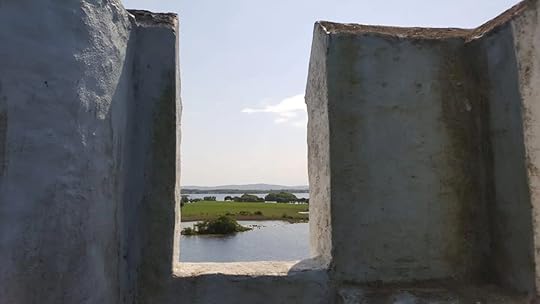
Photo: Airbnb

Photo: Airbnb
Live out your own fairytale at this idyllic Galway Ireland castle Airbnb set in its own pleasure garden. Whitewashed walls speckled with tapestries and brass rubbing portraits, a spiral staircase, a nail-studded front door, and oak beams aplenty hark back to the origins of the 13th-century dwelling. A rowing boat is provided to make the most of the dreamy lakeside abode.
Twelve guests, six bedrooms
Price: $280 per night

Photo: Airbnb

Photo: Airbnb

Photo: Airbnb

Photo: Airbnb
After centuries of abandonment, this battlemented Tudor-style castle underwent a major restoration in the late 90s and consists of nine luxurious bedrooms. An extensive lawn stretches out from the castle with football, boules, and croquet gear on hand to while away a sunny afternoon. Its setting in the midst of County Tipperary makes Lisheen Castle a solid jumping-off point for exploring Galway, Kilkenny, and Dublin.
Fourteen guests, nine bedrooms
Price: $1,330 per night

Photo: Airbnb

Photo: Airbnb
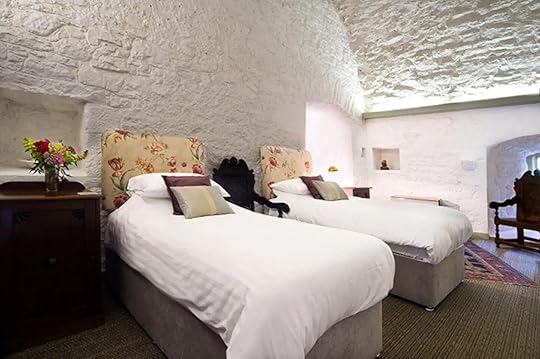
Photo: Airbnb

Photo: Airbnb
This 500-year-old Norman keep has undergone a thoughtful extension while remaining faithful to the original building. All bedrooms are themed to ensure that each is unique – the “Wizard Room” will prove a hit with kids. The hosts offer a home-cooked Irish dinner service for a reasonable fee. Be prepared to share this County Meath castle rental with its long-term residents; Ross Castle is rumored to house a ghost or two.
Fourteen guests, seven bedrooms
Price: $1,600 per night

Photo: Airbnb

Photo: Airbnb

Photo: Airbnb

Photo: Airbnb
This turreted 15th-century castle in County Louth is the ideal Irish castle vacation if you’re eager to make the most of the surroundings. Sandy beaches are less than five minutes away by car while you can be in Dublin or Belfast in under 90 minutes. Rental of Barmeath Castle grants access to a full wing of the residence as well as the private patio, tennis court, and woodlands. A pool table and foosball table will keep the group entertained in the evenings. 
Twelve guests, seven bedrooms
Price: $865 per night
Here’s How Long the Pilot Shortage Could Impact Your Travel Plans

If you’ve noticed that there seem to be fewer options to fly and the flights that are available cost more, that’s mainly due to a few key reasons. There are rising fuel prices and that the end of the latest major variant is spurring high travel demand. And then there are the staffing issues. For airlines, one particularly detrimental issue is the pilot staffing issue, and it doesn’t look like it’ll be resolved anytime soon.
According to federal labor statistics, airlines would need to hire 14,500 pilots each year until 2030 to close the gap. The problem is the United States only produces 5,000 to 7,000 new pilots per year, according to United Airlines CEO Scott Kirby. That doesn’t account for the pilots leaving the industry voluntarily and pilots who legally must retire at age 65.
“The pilot shortage for the industry is real and most airlines are simply not going to be able to realize their capacity plan because there simply aren’t enough pilots, at least not for the next five plus years,” United Airlines CEO Scott Kirby said on a recent quarterly conference call. “The other really large airlines will also probably be able to attract enough pilots, but for anyone else, I just don’t think it’s mathematically possible to meet the pilot demand for the capacity plans that are out there.”
While this issue has been going on for a while, the pandemic exacerbated the problem when airlines were forced to lay off employees, with many workers accepting a contract buyout or retiring early. Some pilot unions have claimed that due to this shortage of pilots, pilots on staff are overworked and suffering from pilot fatigue.
Two years since the pandemic began, all major airlines are expecting fewer flights scheduled this quarter, according to Time. That’s down nine to 13 percent depending on the airline — meaning if there is a flight you’ve been eyeing for spring or summer travel, you might want to snatch it up quickly before its completely full. The pilot shortage isn’t going away anytime soon, so you might want to be prepared for the month ahead and, really, years to come. 
The One Crucial Reason You Should Always Check in Early for Your Southwest Flight

Many travelers like to board first to make sure there is room in the overhead compartments to store their carry-on (except for those who believe that priority boarding is actually bad). And when it comes to boarding first on Southwest , you’ll have to approach your flight differently than if you were flying on Delta, United, or any other major airline.
There is one simple reason: Checking in as early as possible leads to a better boarding group.
For the unfamiliar, Southwest uses a different boarding process than other major airlines. Passengers get boarding groups (either A, B, or C with a subsequent number from 1-60 of where in that boarding group they stand) instead of assigned seats. Those boarding groups are, for the most part, assigned based on when passengers check in. The better your boarding group, the better chance a passenger has of finding overhead bin space and snagging an aisle or window seat.
Scott Keyes, founder of Scott’s Cheap Flights, told Travel + Leisure that Southwest is one of the few airlines where it actually matters how early you check in because seats are first-come, first-serve based on check-in time. Like other airlines, check-in starts 24 hours before the flight for Southwest. Keyes notes that even waiting five to 10 minutes after check-in opens could mean getting bumped to the B or C seating groups (which means a lower likelihood of sitting with your group or getting an aisle or window seat).
Southwest credit cards come with four upgraded boardings per year, so your position may depend on who is using their perks on your flight regardless of how early you check in. If there are any passengers on flights that don’t require a plane change, they will already have their seat as well (Southwest doesn’t kick them out after they spend the first leg of a trip in a certain spot, after all). There are also Southwest A-List and A-List Preferred flyers who get their boarding number before the rest of the passengers can check in.
Southwest does have a program called Early Bird Check-in that gets around the whole issue of setting an alarm to check into your flight the second opens — to a point. It’ll guarantee that you’re among the first to board if you pay between $15 and $25 per flight (meaning you pay twice for a round-trip booking).
However, Early Bird Check-In doesn’t jump ahead of the 15 priority boarding spots reserved people who buy Business Select tickets (meaning the A 1-15 spots).
Still, if you want to have the best chance possible of getting the seat you desire on your Southwest flight, you might want to follow Keyes’s advice and set an alarm for when check-in opens.
Oaxacan Cuisine Is Unlike Food From Anywhere Else. These Are the 5 Dishes You Have To Try.
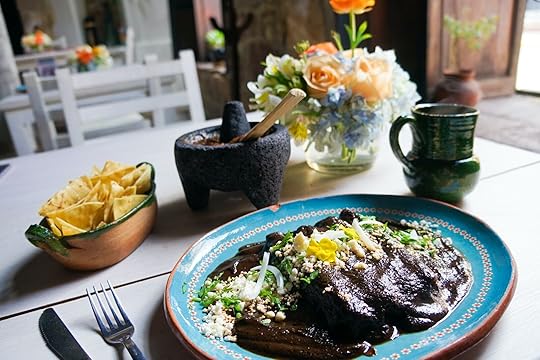
The state of Oaxaca in Southwestern Mexico is known as a destination for people who plan trips around what they are going to eat, but the reason why often escapes the visitors who travel far enough south to actually sample it. This sierras-meets-sea locale is saturated with exciting cooking techniques and colorful ingredients like almost nowhere else in Mexico and the depth of flavors to be found are unparalleled. That’s why Oaxacan food has such a well-deserved reputation for deliciousness.
Cookbook author and Chef Susana Trilling of the Seasons of My Heart Cooking School tells Matador Networ that she likes to describe Oaxacan food as “esoteric.” And she would know, having spent nearly three decades immersing herself in the traditional recipes and cooking styles of Oaxaca. Even today, she stumbles across new-to-her techniques and recipes that have been lingering on this landscape for thousands of years. She’s not alone, either.
It is Oaxaca’s landscape that is in large part to thank for these culinary traditions and all of the souls who are passionate about food that it attracts. Three mountain ranges and a steamy Pacific coastline slice and dice Oaxaca into eight distinct regions and many more microclimates. The diversity of the landscape has also served as the foundation for the wide range of ingredients, and therefore dishes, that vary by which side of what sierra you happen to be standing in.
“There are more traditions, more ingredients, and certainly more ways of cooking those ingredients than anywhere else in Mexico,” Oaxaca-born chef Rafael Villalobos Valderrama says.
We also can’t ignore the fact that Oaxaca has been the third poorest state in Mexico for decades. This, too, has played a part in the culinary traditions and characteristic resourcefulness when it comes to Oaxacan food and ingredients.
Heirloom corn, beans, squash, chiles, herbs, and greens are at the heart of the Oaxacan pantry. Take mole, for example. This dish often associated with Mexico as a whole is far more complex in a place like Oaxaca. And though the state may be nicknamed “the land of the seven moles,” in truth there are an infinite number of Oaxacan moles.
Iver González, executive chef at Parador San Miguel in Oaxaca City, emphasizes that it’s the nuanced ingredients that can vary by region, season, culture, and recipe that make moles from Oaxaca a cut above those coming out of kitchens anywhere else in Mexico.
As a general rule in Oaxacan cooking, everything seems to be fair game. There are wild mushrooms and greens, like pitiona (lippia alba), cedrón (lemon verbena), hoja santa (Mexican pepperleaf), and epazote (an indigenous herb), to edible insects like chapulines (grasshoppers), chicatanas (flying ants), and gusanos de maguey (grubs that live on agave plants that are dried and mixed into salsas and sal de gusano, or worm salt). Huitlacoche, the fungus that grows on ears of corn, is often added to Oaxacan antojitos (masa-based snacks) as a topping.
You’ll spot flor de calabaza (squash blossom) floating in soups, atop memelas, or inside still steamy quesadillas, while no preparation of black beans in a Oaxacan kitchen is complete without the addition of hoja de aguacate (avocado leaves). And when it comes to proteins that aren’t of the insect variety, Oaxacan cuisine’s go-tos are tasajo (salt-cured beef), cecina (grilled pork either salted or marinated in chili), chorizo oaxaqueño (pork sausage prepared with chili, vinegar, and spices), rabbit, iguana, and a year-round supply of dried shrimp, among others.
These are five dishes you’ll the best versions of in Oaxaca with long histories and strong ties to the region.
Tlayudas
Photo: Bruno_Doinel/Shutterstock
The base of this Oaxacan street food and late night staple is a colossal and crispy tortilla known as a tlayuda. It’s layered with asiento (the pork fat leftover from cooking fried pork rinds) and refried beans. Then, a combination of shredded lettuce or cabbage, tomato, and quesillo (a string cheese-like Oaxacan delicacy) is added before it’s cooked on the comal (a flat griddle quintessential to Oaxacan cooking). Layer it up more with those distinctly Oaxacan proteins like chorizo oaxaqueño, tasajo, cecina, or chapulines, and slather on the salsas before every single bite.
Memelas
Photo: Marcos Castillo/Shutterstock
Memelas are a classic Oaxacan breakfast item served fresh off the comal at street food setups and market stalls all over the state. The memela in its simplest form is an open-faced maize tortilla dressed with asiento, refried beans, crumbled cheese, and salsa. These simple but delicious breakfast bites can be made more complex with toppings like huitlacoche (corn mushroom), nopales (the pads of the prickly pear cactus), and huevos al comal (eggs cooked on the comal), or wrapped in the aromatic hoja santa leaf.
Mole
Photo: Jordi Ibern/Shutterstock
Traditionally more of a celebratory dish, mole (essentially a type of sauce and marinade) can always be found on a menu in Oaxaca these days. This chili-centric Oaxacan plate usually requires no less than a dozen different ingredients. The seven classic moles of Oaxaca are amarillo, chichilo, coloradito, negro, manchamanteles, rojo, and verde, though the rare Mixtec mole blanco should be added to the list as well.
And don’t forget there are yet thousands more varieties too, depending on who’s in the kitchen and where in Oaxaca you are. You’ll find the classic seven moles as a sampler flight at some restaurants in Oaxaca City or served inside of tamales and empanadas, poured over beef, chicken, and mushrooms, or as enmoladas, similar to enchiladas, only the fried tortillas are swimming in mole negro instead of mole coloradito.
Sopa de guías con chochoyotesSopa de guías is a pre-Hispanic soup unique to the state of Oaxaca that is traditionally prepared during the rainy season when the ingredients are at their freshest. It’s made with nearly every part of the squash, from blossom to vine, as well as young corn rounds, garlic, onions, and chepil (a wild herb). There is another twist on this ancestral soup called espesado de sopa de guías de calabaza, where the cook will also grind fresh corn kernels into the soup to thicken it. Today, corn dumplings, called chochoyotes, are often added to the broth and a spicy salsa de chile bravo is served on the side to give this delicious soup some bite.
Caldo de piedra
Photo: aindigo/Shutterstock
Caldo de piedra, another ancestral dish of Oaxaca’s pre-Hispanic past, is a fish or seafood soup attributed to the indigenous Chinantecos in the north of Oaxaca state. It’s cooked by the heat of fire-warmed river stones. Ancient and hyper-regionalized as this unique soup may be, it’s still found on menus throughout Oaxaca and Oaxaca City. Chef Salma Lopez of the popular seafood restaurant Humar in Oaxaca City shared with Matador Network that in traditional Chinanteco culture, this soup was prepared by the men for the women right on the riverbanks and in the natural basins that form there. The men would heat river stones in the fire they’d prepared and then place the hot stones into the fishy broth to cook the soup and its other ingredients, like tomato, wild onions, and epazote (wormseed). 
April 25, 2022
The Most Popular Museum in (Almost) Every Country in the World

Museums are a great way to understand the culture of your new environment, whether that be from a historical, artistic, or scientific perspective. But with so many choices in pretty much every major city and only a limited amount of time in a destination, you may want to prioritize the most prominent museums instead of trying to hit every single one. For that, the cruise company Cruise Croatia conducted a study to find the most popular museum in every country worldwide.

Photo: Cruise Croatia
Europe is known for having amazing museums across the continent. The Lourve in France racking up 72,000 searches may seem like an intimidating choice, but you can definitely make the best out of it in just one day. Even with the popular choice of the Museo Del Prado in Spain with 121,000 monthly searches, the Tate Modern in the UK is the most searched-for museum in Europe with 260,000 monthly searches.

Photo: Cruise Croatia
In North America, the Soumaya Museum in Mexico City is the second most popular museum with 60,000 monthly searches. Even from the outside, the Soumaya is stunning with its shiny and curved metal architecture. The 170,000-square-foot museum is completely free, showing off over 66,000 Latin American and European pieces. But the most popular museum in all of North America — and the entire world — is The Metropolitan Museum of Art in New York racking up 770,000 monthly searches. The museum itself is huge, priding itself as the largest art museum in the entire Western Hemisphere with more than two million works in its permanent collection.

Photo: Cruise Croatia

Photo: Cruise Croatia
The most popular museum on every continentNorth America: The Metropolitan Museum of Art, New YorkSouth America: Museu do Amanhã, BrazilEurope: Tate Modern, United KingdomAfrica: The National Museum of Egyptian Civilization, EgyptAsia: Ghibli Museum, JapanOceania: Melbourne Museum, Australia
Photo: Cruise Croatia
To find the most popular museum in every country, Cruise Croatia used the SEO tool Ahref and searched for the word “museum” in every country with data available. The museum with the highest search volume showed how many times per month, on average, people search for the target keyword across the country and was then named the most popular museum in that country.
Guide to California Science Centre

Much as Washington, DC, has the Smithsonian museum complex, Los Angles has Exposition Park, a 160-acre campus housing some of the city’s most important museums. Chief among them is the California Science Center, a Smithsonian Affiliate, whose more than 150 interactive exhibitions attract more than two million visitors each year.
With so much to see and do, you’re gonna want to make a game plan before you visit the California Science Center. To help, we’ve asked Dr. Liz Roth-Johnson, the museum’s Curator of Life Sciences, to share her tips and tricks for getting the most out of your day at the museum. After receiving a Ph.D. in Molecular Biology from UCLA, where she later held a teaching position, Dr. Roth-Johnson joined the California Science Center team in 2020 where she relishes finding “new ways to make biology fun, memorable, and accessible to as many people as possible.”
Before you go: the #1 piece of advice before visitingThe best times to visitWhere to start your visitMust-see exhibitions and why they matterMost underrated exhibitions you need to check outWhat you can skipWhat you didn’t knowBefore you go: the #1 piece of advice before visiting the California Science Center
Photo: Kit Leong/Shutterstock
At 245,000 square feet, the California Science Center is almost as big as the British Museum, the largest museum in the United Kingdom. “There’s so much to do,” says Roth-Johnson. “You’ll want to prioritize, especially if you have limited time or little ones.”
Her suggestion for planning an airtight visit is twofold: First, get well acquainted with the museum’s website to see what’s on offer and figure out what interests you most, and then make a reservation to drop by when it’s most convenient for you.
The museum is currently using timed ticketing, meaning you can book the arrival time best suits your schedule on the quarter-hour. Note that timed-entry reservations do not include access to IMAX shows or special paid exhibitions, and you’ll be charged a three-dollar service fee.
The best times to visit the California Science CenterThe best times to visit the California Science Center and beat the crowds depend on the season.
According to Roth-Johnson, Monday, Tuesday, and Wednesday afternoons in late August and September are the ideal times to visit the museum because it’s easiest to avoid school groups.
In late summer and early fall, “school has just started … and field trips have not yet started up” while later in the year students tend to clear out after 2 PM on weekdays. The beginning of the week is also generally quieter than the days leading up to the weekend.
If you do plan to come on a Friday, Saturday, or Sunday, “the earlier in the morning, the better,” says Roth-Johnson. You’re unlikely to avoid the crowds entirely on weekends, but you’ll get a better view of popular permanent exhibits such as Space Shuttle Endeavour and Kelp Forest in the Ecosystems gallery if you set an early alarm.
Where to start your visit to the California Science Center
Photo: brian takes photos/Shutterstock
Of all the museum’s exhibits, Endeavour draws the biggest crowds, so if you’ve heeded Roth-Johnson’s advice to visit early on a weekend morning, you’ll want to beeline for the space shuttle to see it before everyone else gets there. Other than that, her philosophy is simple: Visitors should start by seeing whatever interests them the most.
The only caveat there pertains to limited-time exhibitions with an accompanying IMAX film, such as “Angkor: The Lost Empire of Cambodia” and “Angkor 3D.” In that case, Roth-Johnson recommends starting with the film to get a “good overview” of the exhibition you’ve come all that way to see, then hit the actual exhibition after.
Five must-see exhibitions at the California Science Center and why they matter1. Space Shuttle Endeavor
Photo: Joseph Sohm/Shutterstock
Endeavour is one of a small handful of retired space shuttles that are now on display in the US. It went to space 25 times between 1992 and 2011 on missions that included service and assembly to the Hubble Space Telescope and International Space Station. The space shuttle is now on display in the Samuel Oschin Pavilion alongside an exhibit called “Endeavour Together: Parts & People” that features artifacts such as an external tank, a flight simulator, and a video detailing the complicated process of transporting the space shuttle to the museum.
2. SKETCH Foundation Air and Space ExhibitsDespite the excitement surrounding Endeavour, one could argue that the SKETCH Foundation Air and Space Exhibits in the museum’s Science Court are more exciting for spacecraft enthusiasts. It’s filled with interactive exhibits that are broken down into four categories: “Air & Airfract,” “Stars & Telescopes,” “Humans in Space,” and “Mission to the Planets.” Here, visitors can strap on wings and enter a large wind tunnel to see what force it takes to lift aircraft off the ground, simulate a test flight of the 1903 Wright Flyer using the same method as the Wright Brothers, and launch a model space rocket 40 feet in the air. Also on display are three flown space capsules from the Mercury, Gemini, and Apollo space programs, model satellites, a moon rock, and more.
3. Kelp Forest
Photo: Hayk_Shalunts/Shutterstock
Of the nine exhibits in the Ecosystems gallery — Kelp Forest, Rocky Shore, Desert, Poles, Deep Sea Vents, Island Zone, River Zone, LA Zone, and Global Zone — the undersea world of Southern California’s kelp forests is most fascinating to visitors. The exhibit is comprised of a 188,000-gallon tank that’s been filled with kelp that can “grow as large as trees” and marine life such as leopard sharks, moray eels, and spiny lobsters. Visitors walk through with iPads in hand to read up on the species present as they identify them.
4. Rocky Shore
Photo: Hayk_Shalunts/Shutterstock
Rocky Shore is a close second to Kelp Forest in the Ecosystems gallery. In this exhibit, visitors can take an interactive approach to learning about sea life by gently handling species such as sea stars and anemones in the touch tank. Another activity lets visitors roleplay as rockbound barnacles by trying to catch “prey” that’s actually ping pong balls while stuck in one place.
5. Desert ZoneIf you have a little more time to dedicate to the Ecosystems gallery, the Desert Zone is not to be missed. You’ll see more wildlife here, from scorpions and Gila monster lizards to desert tortoises and fennec foxes, not to mention a number of cactus species. But the highlight of this exhibit has to be the flash flood simulator. Every few minutes, visitors can experience the intensity of a summer storm that might account for most of the rain a desert ecosystem sees in an entire year.
The most underrated exhibits to check out at the California Science CenterMission 26: The Big EndeavourAfter you’ve gotten up close and personal with the Endeavour space shuttle, Roth-Johnson advises visitors not to miss this photo exhibit on the second floor of the Creative World gallery. This exhibit traces Endeavour‘s move across the US, from Florida to California, after it was retired. Images capture various points along the journey, showing the space shuttle backdropped by cities and scenes all across the country, while oversized shuttle mission patches. Being surrounded by photos of Endeavour in all its glory right here on Earth almost makes you feel closer to the spacecraft than the physical shuttle.
Fire! Science & SafetyEqual parts educational and exciting, this exhibit was created in partnership with the Children’s Burn Foundation to teach visitors about fire hazards, how to escape and extinguish household fires, wildfire preparedness, burn prevention, and more. With respect to the seriousness of the subject matter, the museum has found a way to make learning about fire fun and memorable, including live demos, scavenger hunts, and an interactive exhibit where guests roleplay as fire danger detectives.
What you can skip at the California Science CenterBetween the museum’s six permanent exhibits, handful of special exhibitions, IMAX screenings, and educational programs, you’d be hard-pressed to see everything at the California Science Center in a single day. But what you choose to skip is up to you. As you’re browsing the website before your visit, take note of what doesn’t strike your fancy, as well as what does, and don’t feel pressured to prioritize the most popular exhibits just because they’re popular.
“If you aren’t interested in aquatic life, don’t go see the kelp forest,” says Roth-Johnson. “If there isn’t an IMAX film that catches your eye, don’t go there.”
This is particularly good advice considering how crowded the popular exhibits can get. There’s no use spending precious visiting time waiting to see Space Shuttle Endeavour if you’d rather get up-close and personal with a sea urchin at Rocky Shore.
What you didn’t know about the California Science Center“Many people don’t know that we have free general admission!” Says Roth-Johnson. “And that we are open every day of the year but Thanksgiving, Christmas, and New Year’s Day.” 
This Is the First Thing You Should Look Up After Your Flight Is Delayed or Canceled

So it’s time to catch your flight and you’re all set and ready to go. Maybe you’re headed on a much-needed vacation, to a graduation, a wedding, or even a honeymoon when bad luck strikes and your flight gets delayed or canceled. If it seems like this is happening more than it used to, that’s because it is. Which means it’s more important than ever to know what to do and how to find an airline’s contract of carriage when it happens to you.
Bad weather, staffing shortages, and pandemic spikes have been driving factors in delayed or canceled flights over the last few years. During the first week of April, for example, airlines canceled thousands of flights due to a bad storm in Fort Lauderdale, leaving many passengers stranded. An airline employee on TikTok named Natalie explained some of her best tips for what to do if your flight is delayed or canceled. And your first step should be Googling your airline’s Bill of Rights.
@adventuresofmattandnat Delayed or Cancelled Flight?Tips & Tricks from an Airline Employee! #traveltipsandhacks #traveltips ♬ original sound – Matt and Nat
“If your flight is delayed or canceled, always google ‘Bill of Rights’ with the airline name. It’ll let you know what your rights are as a customer and what kind of compensation you would get for being on the tarmac for an hour — or maybe you’ve been in the airport for five hours — what you get for that,” Natalie says in the video.
On testing the advice, searching “contract of carriage” typically comes up with a better answer.
An airline’s Bill of Rights can be found on each airline’s website. It may also be called the “Notice of Rights” or “Conditions of carriage.” JetBlue for example, offers different amounts of compensation for cancellations, departure delays, onboard ground delays on departure, and Onboard ground delays on arrival. Passengers with a departure delay can receive between $50 to $200. On the ground delays can result in compensation between a $100 and $250 credit, and delays upon arrival can receive between a $50 and $200 credit.
On Delta Air Lines, the Contract of Carriage states:
“If there is a flight cancellation, diversion, delay of greater than 120 minutes, or that will cause a passenger to miss connections, Delta will (at passenger’s request) cancel the remaining ticket and refund the unused portion of the ticket and unused ancillary fees in the original form of payment in accordance with Rule 22, Go to footer note. If the passenger does not request cancellation and refund of the remaining portion of the ticket, Delta will transport the passenger to the destination on Delta’s next flight on which seats are available in the class of service originally purchased.”
Contract of carriage for major airlines based in the United StatesAlaska Airlines contract of carriageAllegiant Air contract of carriageAmerican Airlines contract of carriageDelta contract of carriageFrontier Airlines contract of carriageJetBlue contract of carriageSouthwest Airlines contract of carriageSpirit Airlines contract of carriageUnited Airlines contract of carriageSo know your rights — a frustrating delay may have a silver lining. 
Airlines Are Changing Flights for People Who Don’t Want To Fly With Unmasked Passengers

Travel looked immediately different after a federal judge in Florida struck down the federal mask mandate for public transportation last week. Whether people were thankful or outraged about the snap decision varied, but there’s no denying it caused more than a little confusion. Now, some airlines are offering refunds or other concessions to people who don’t feel comfortable flying with unmasked passengers.
United Airlines CEO Scott Kirby said the airline is working with customers who have concerns “to find another option, give them a credit, or if they just don’t ever want to fly again, [we are] actually willing to give them a refund,” in an interview with NBC. Even people who purchased basic economy tickets can delay their flight.
Other major airlines have a slightly more ambiguous stance, however. American Airlines is considering different options to accommodate passengers with concerns as well, though it already allows refunds for the higher-priced refundable tickets and airline credit for nonrefundable tickets (excluding basic economy tickets purchased after April 1). Delta said it’s being handled on a case-by-case basis, according to AFAR.
In all cases, it’s important to note that you’re going to have to deal with customer service. Those calls are bad in normal circumstances, but even worse due to the staffing shortages and other issues plaguing the entire industry. So be prepared to wait: there are reports of people on the phone with airlines for two and a half hours to resolve basic issues.
If you’d still like to travel, bring an N95 or KN95 along with you. Because while there may not be a mandate that requires a mask anymore, there certainly is nothing saying that you can’t wear a mask.
Matador Network's Blog
- Matador Network's profile
- 6 followers



